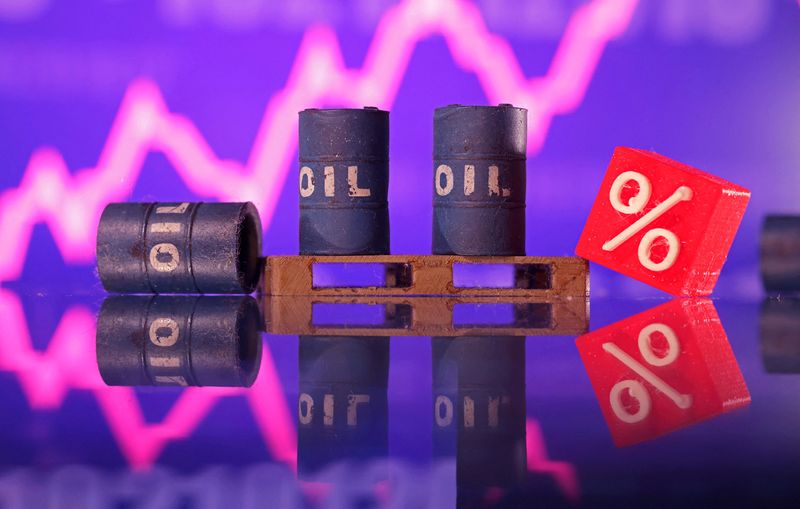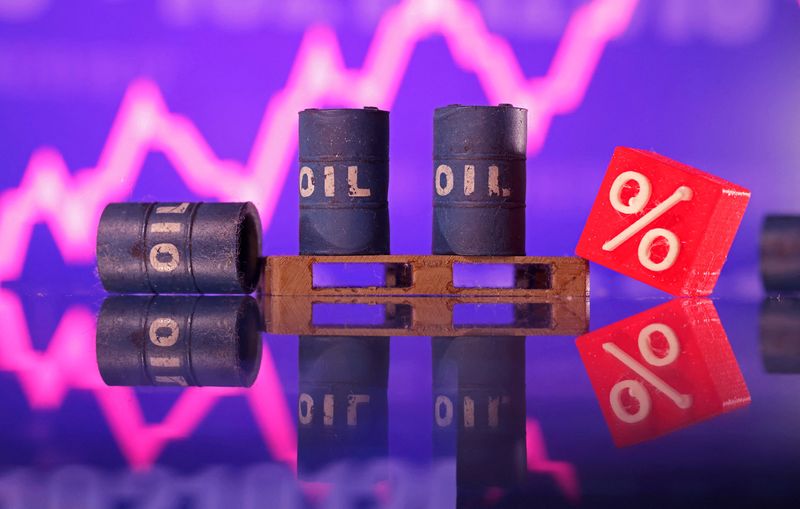
By Florence Tan
SINGAPORE (Reuters) -Oil prices extended gains for a third session on Monday, with Brent rising above $81 a barrel to its highest in more than four months, as wider U.S. sanctions are expected to affect Russian crude exports to top buyers China and India.
Brent crude futures climbed $1.48, or 1.86%, to $81.24 a barrel by 0113 GMT after hitting an intraday high of $81.49, the highest since Aug. 27.
U.S. West Texas Intermediate crude rose $1.53, or 2% to $78.10 a barrel after touching a high of $78.39, the most since Oct. 8.
Brent and WTI have risen by more than 6% since Jan. 8 and both contracts surged after the U.S. Treasury imposed wider sanctions on Russian oil on Friday. The new sanctions included producers Gazprom (MCX:GAZP) Neft and Surgutneftegas, as well as 183 vessels that have shipped Russian oil, targeting the revenue Moscow has used to fund its war with Ukraine.
Russian oil exports will be hurt severely by the new sanctions, pushing China and India, the world’s top and third largest oil importers respectively, to source more crude from the Middle East, Africa and the Americas, which will boost prices and shipping costs, traders and analysts said.
“The new Russian sanctions from the outgoing administration are a net addition to at-risk supply, adding more uncertainty to the (first quarter) outlook,” RBC Capital analysts said in a note.
The latest batch of sanctions covered ships linked to 1.5 million barrels per day of seaborne Russian crude oil activity on average in 2024, the bank estimated. This consisted of 750,000 bpd of exports to China and 350,000 bpd to India.
“Overall, the doubling of tankers sanctioned for moving Russian barrels could serve as a major logistical headwind to post-invasion crude flows,” the analysts said.

Many of the tankers named in the latest sanctions have been used to ship oil to India and China as previous Western sanctions and a price cap imposed by the Group of Seven countries in 2022 shifted trade in Russian oil from Europe to Asia. Some of the ships have also moved oil from Iran, which is also under sanctions.
“The last round of OFAC sanctions targeting Russian oil companies and a very large number of tankers will be consequential in particular for India,” said Harry Tchilinguirian, head of research at Onyx Capital Group.
This post is originally published on INVESTING.




